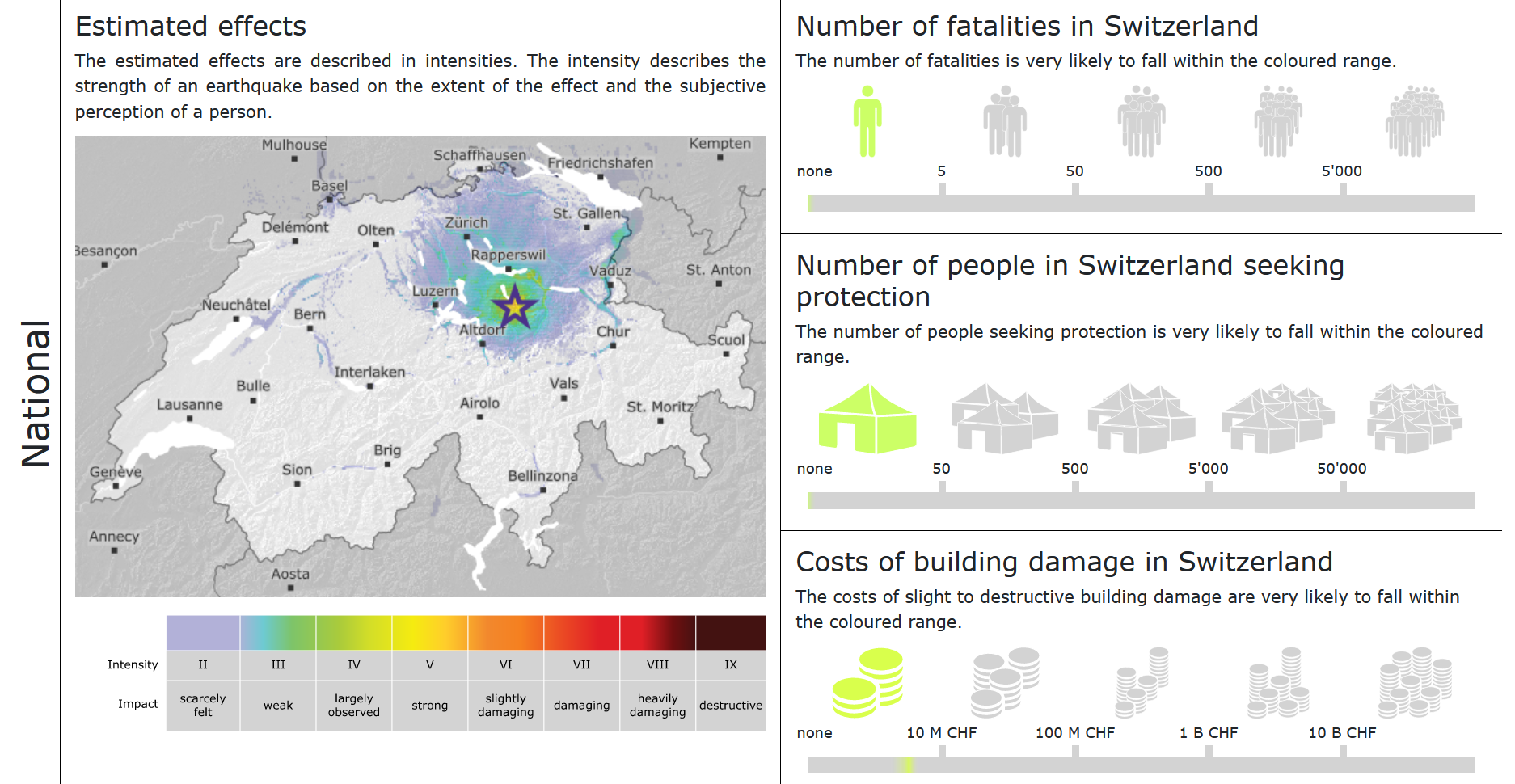2024-07-09
Rapid impact assessments now available
From now on, the Swiss Seismological Service (SED) at ETH Zurich will publish a rapid impact assessment for any earthquake with a magnitude of 3 or more. This will inform emergency services, authorities and the public about the expected human and financial consequences of earthquakes that are felt over a wide area or cause damage, doing so shortly after these quakes occur. The assessments are based on the relevant quake parameters and the earthquake risk model of Switzerland published in 2023.
After a severe earthquake, emergency services must rapidly obtain a picture of the situation in order to deploy their resources as efficiently as possible. Rapid impact assessments contribute to this process, especially in the hours immediately after an earthquake when only limited or incomplete information is available from the affected area. It is also very important to keep the public informed in such a scenario. Although large-scale damage is only anticipated for earthquake magnitudes of around 5 or above, the SED already publishes a rapid impact assessment for smaller quakes with a magnitude of 3 or more. This helps to ensure that the whole process from creation through to application can be enacted and practised on a regular basis. On average, damaging earthquakes occur in Switzerland only every 8 to 15 years.
Read more...The rapid impact assessment values given are automatically generated estimates based on the earthquake risk model of Switzerland. However, the actual extent of the damage may differ considerably from these estimates, and the accuracy of any information is not guaranteed. There may be changes, for example, if the earthquake parameters underlying the impact assessment are updated during the detailed analysis. The decisive factor in the calculations is the modelled impact of the quake on potentially affected buildings. This makes it possible to estimate the approximate number of fatalities and people injured and seeking protection as well as the costs of damage to buildings. Different occupancy patterns depending on the time of day and seasonal occupancy fluctuations are currently not taken into account here, nor are human and financial losses resulting from damage to infrastructure (e.g. bridges, railway lines) or secondary damage (e.g. fire, landslides). In addition, rapid impact assessments of aftershocks disregard the damage that has already occurred and any increased vulnerability of buildings due to previous earthquakes.
As well as a publicly available overview of the expected consequences of the earthquake at national level, authorities and the Earthquake Damage Organization (EDO) will have access to cantonal overviews, showing the anticipated consequences of a quake for each canton and its communes. Access to the cantonal overviews is limited because the uncertainties at this level are even greater than at national level, meaning that the values need to be interpreted with due caution. The SED usually publishes the national overviews on its website (www.seismo.ethz.ch) within an hour of a quake, i.e. as soon as the data can be prepared.
Further information on rapid impact assessments can be found here.
